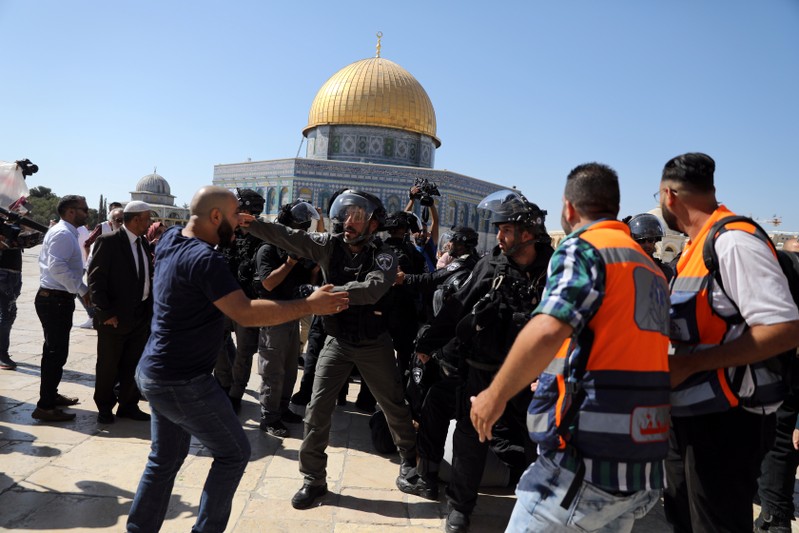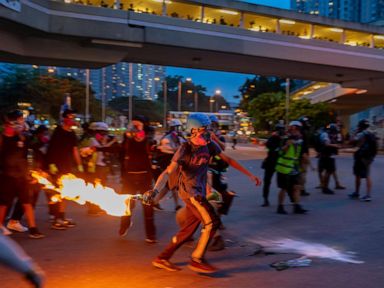
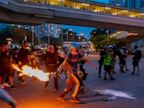

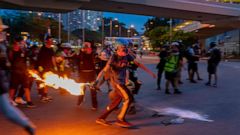
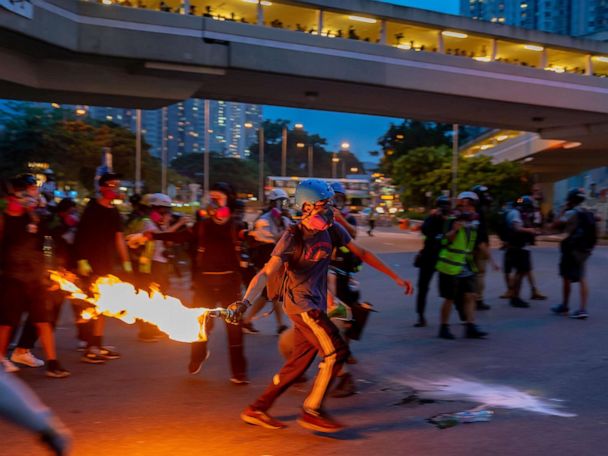
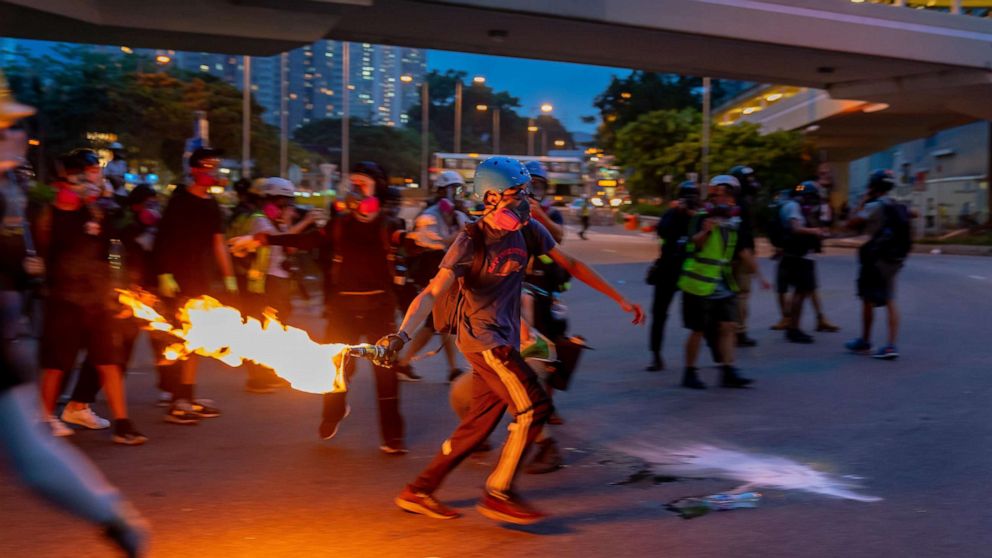
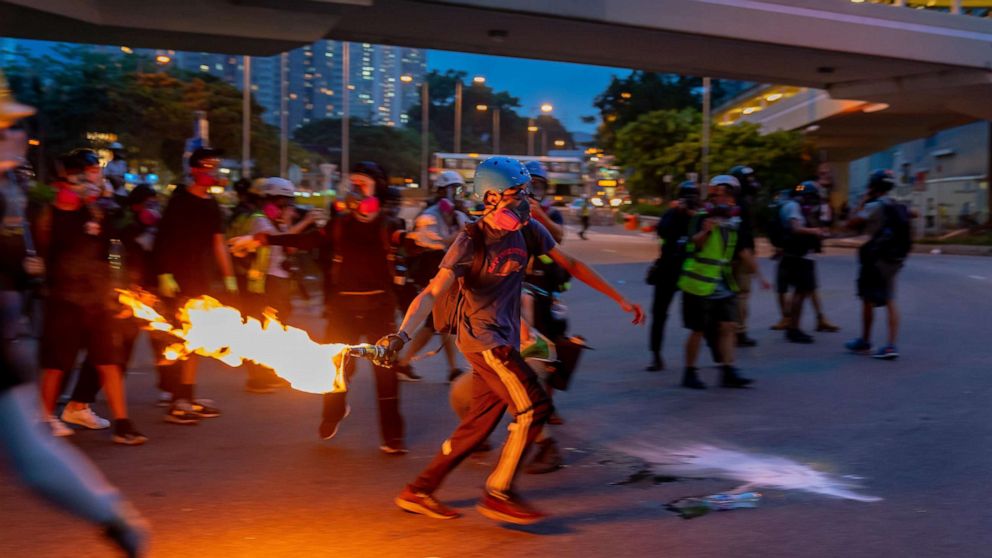
As a 10th consecutive weekend of protests continues in Hong Kong and with Beijing’s terse and threatening warning that the protesters are “pushing [the city] into a dangerous abyss,” it is not clear where the seemingly indefinite unrest this heading.
Anti-government protesters have staked their ground on five demands, which includes formally withdrawing the now-suspended extradition bill that kick-started these protests and establishing an independent commission to investigate police conduct in their handling of the protests.
Equally immovable is the Chinese government, which has seemingly taken control of the official narrative from the Hong Kong government. The messaging was made clear when China’s Hong Kong and Macao Office (HKMAO) summoned 500 pro-establishment Hong Kong officials, including lawmakers, businessmen and influential figures, over the border to Shenzhen for a “seminar.”
No compromise from either side
Zhang Xiaoming, the head of the HKMAO, rejected protesters’ demands, but said they may consider an inquiry after the protests were called off.
“The central government is highly concerned about the situation in Hong Kong, and have been making plans from a strategic level and with the full picture in mind,” Zhang reportedly told the gathering.
Beijing reportedly demanded the attendees throw their weight behind embattled Hong Kong leader Carrie Lam and the Hong Kong Police Force. The message is clear: no compromise.
“The gap between the governing and the governed is growing,” Antony Dapiran, Hong Kong-based lawyer and author of “City of Protest: A Recent History of Dissent in Hong Kong,” told ABC News. “And if there is no closing of the gap, the protesters are going to stay out in the streets.”
The protests themselves have taken on a much more violent and confrontational tinge since their massive, peaceful beginnings in early June, when hundreds of thousands marched against a now-suspended extradition bill. The protest demands have broadened to include universal suffrage and reached new levels last Monday as the seemingly leaderless movement led Hong Kong on a city-wide strike, disrupting traffic and hundreds of flights.
Then protesters led police into violent pitch battles in multiple neighborhoods all across the sprawling city. That night, Hong Kong police said they used almost as many canisters of tear gas — 800 total — as it had used the previous two months.
Dapiran argued that some of the protesters’ demands are not particularly untenable, but it has become a question of saving face for Beijing and the Hong Kong governments.
The propaganda war: Will China send in the PLA?
After weeks of sitting on the sidelines, the messaging from Beijing has become increasingly ominous ever since protesters began targeting sensitive symbols of China’s sovereignty: The Chinese national emblem was defaced and its five-starred national flag has been thrown into the sea twice.
The rhetoric coming out of Beijing has become so forceful that it would not rule out the eventuality of sending the People Liberation Army onto streets of one of the world’s financial capitals. The government even released a video of a PLA drill where a soldier shouted, “All consequence are at your own risk,” in Cantonese — the Chinese dialect spoken in Hong Kong — while rounding up a group of protesters.
The Communist Party, however, is celebrating its 70th anniversary in power on Oct. 1 with a massive military parade in Beijing. Having boots on the ground to suppress a protest in its own territory, in front of the world’s media, would likely taint their celebration.
While Beijing would prefer the protests be over well ahead of Oct. 1, it will likely exhaust a number of options before turning to the PLA, which has already been stationed inside Hong Kong since 1997.
Some of those options are already at play, including a battle to sway local public opinion.
News of the protests was initially censored inside mainland China, but the increasing violence on protesters’ part has Beijing and its propaganda apparatus trying to discredit them as unpatriotic separatists trying to ruin Hong Kong and whipping up nationalist fervor on the mainland and in pro-Beijing neighborhoods in Hong Kong in the process.
Lam appeared in public for the first time in two weeks before the city-wide strike to preview Beijing’s line that the protests were no longer a peaceful popular movement against the bill or even her government, but a direct challenge to “one country, two systems” — the principle that allows Hong Kong’s semi-autonomy and Chinese national sovereignty.
Shortly after the Shenzhen meeting, 17 prominent Hong Kong property developers, who control much of the wealth in Hong Kong and had been silent about the protests thus far, fell into line and issued a joint statement denouncing the violence perpetrated by a “small number of people.”
The Bank of China even took out full-page ads in local pro-government Hong Kong papers reading, “Stop the violence, contain chaos, restore order.”
Pressure on the embattled police
Beijing has also thrown its full weight behind the Hong Kong Police Force, which has been the face of the local government’s response since Lam’s government receded from view for much of July. They were once known as “Asia’s Finest,” but have suffered reputational damage in the eyes of some Hong Kongers for their conduct in handling protesters and their slow response and perceived apathy to the July 21 violent mob attack on protesters and pedestrians inside a rail station in the suburb of Yuen Long.
According to Dapiran, Beijing is strongly pushing the Hong Kong police to take charge of the situation.
“Pressure is on the police to restore stability and end this weekly cycle of protests,” he said.
The police have significantly stepped up arrests in the past week. There were 148 arrests on Aug. 5 alone, whereas previously police were more focused on dispersing the protesters from the scene. Dapiran said this is intentional and will likely increase. “Rioting” carries the potential of a 10-year sentence if convicted.
The government is hoping that the increased risk deters would-be protesters, many of whom are high school and university students.
Endgame?
Lam reemerged Friday, saying the protests are starting to affect the Asian financial hub’s economy, likening it to a “tsunami hitting Hong Kong.”
Dapiran argued that if the government were to establish an independent inquiry, and possibly restart the political reform process stalled since the 2014 Umbrella Movement protests, it would diffuse much of the protest.
The suggestion of an inquiry has been endorsed by pro-Beijing lawmakers, foreign governments and many of her government’s own civil servants.
But even then, reflecting Beijing’s unwillingness, Lam refused to give an inch.
“As far as political solution is concerned, I don’t think we should just sort of make concessions just to silence the violent protesters,” she said. “We should do what is right for Hong Kong. And at this moment, what is right for Hong Kong is to stop the violence and to say ‘no’ to the chaotic situation that Hong Kong has experienced in the last few weeks so we can move on.”
It’s hard to imagine how the city can move on with a government that does not appear to be listening to its people and an angry population wanting to be heard.
But the clock may be running out.
As Dapiran puts it, “On the 1st of October, Beijing wants the whole China, including Hong Kong, to be warmly celebrating the 70th anniversary.”

